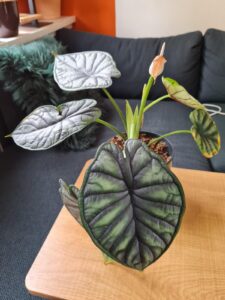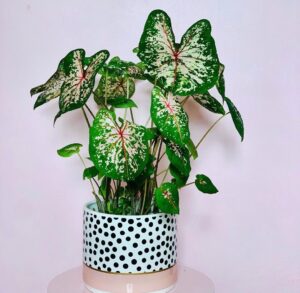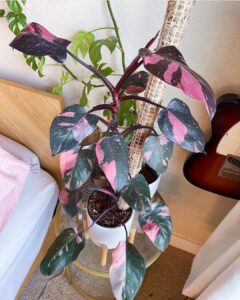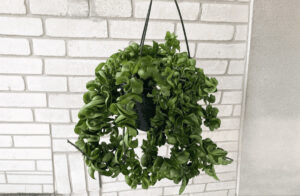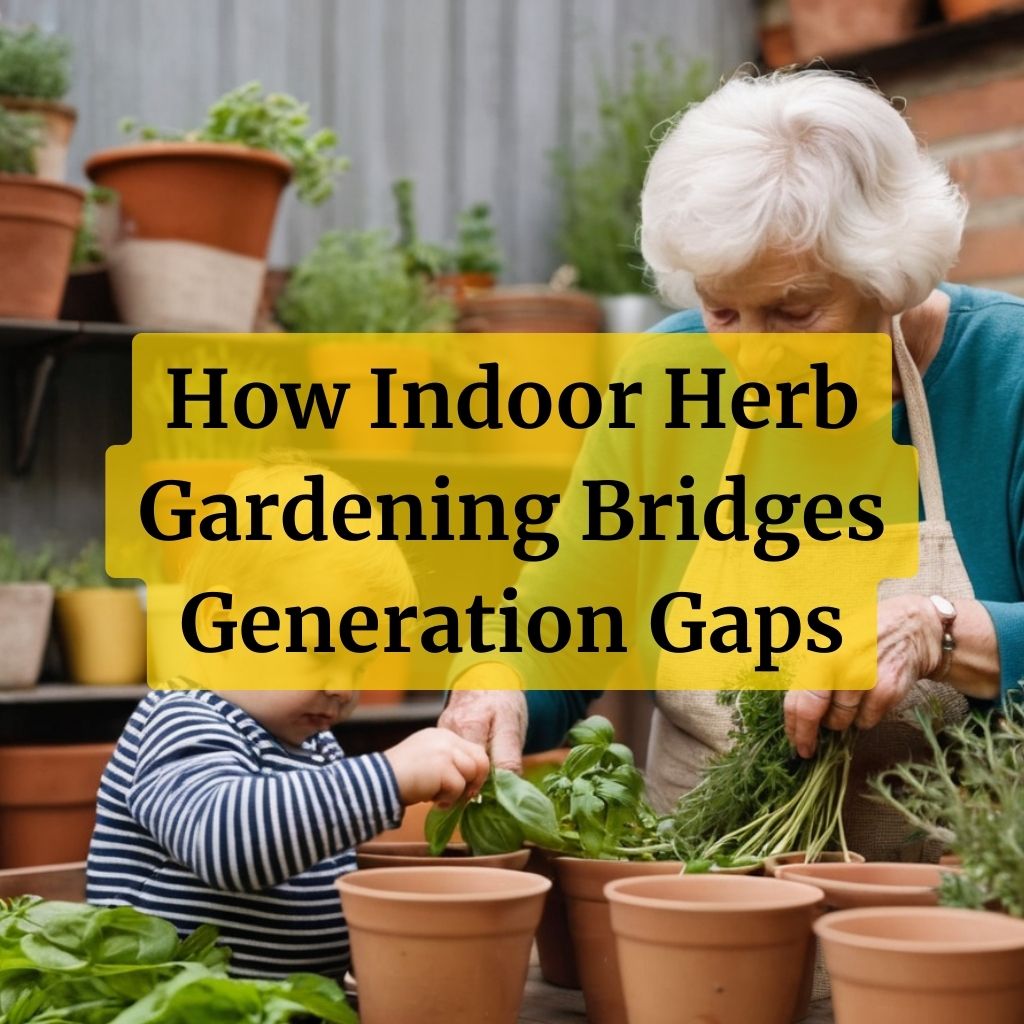
Herb gardening has long been a tradition passed down from older generations to younger family members. While trends and technologies change over time, growing and using fresh herbs remains a timeless activity that bridges generation gaps.
In this article
- 1 Granny’s garden lessons
- 2 A bonding activity for grandparents and grandchildren
- 3 Continuing traditions of self-sufficiency
- 4 Keeping culinary traditions alive
- 5 Using homegrown herbs for wellness
- 6 Modern adaptations keep traditions relevant
- 7 Indoor gardening makes herbs accessible year-round.
- 8 Interpretive herb gardens for all senses
- 9 A place for shared memories
- 10 Maintaining intergenerational connections
- 11 Overcoming geographic barriers
- 12 Adapting to evolving schedules
- 13 Inclusive activities for all abilities
Granny’s garden lessons
As a child, I spent many summer afternoons in my grandmother’s backyard herb garden. She took great care in teaching me how to identify different herbs by their smell, texture and taste. I have fond memories of snipping fragrant leaves of rosemary, thyme and basil to add to meals she prepared.
My grandmother used to share stories about how the herbs were used in the in cooking and passed down secret recipes she learned from her mother. Her passion ignited my own early love of cooking and using fresh ingredients.
Today, I find myself sharing the same lessons with my young niece when she visits, embracing the cyclical nature of knowledge transfer between generations.
A bonding activity for grandparents and grandchildren
Many grandparents now find indoor herb gardening provides a meaningful activity to enjoy with grandchildren, especially during winter months or if physical limitations prevent working in an outdoor space.
The small size and minimal care required of herb plants makes them ideally suitable for little hands to assist with watering, pruning and harvesting activities. Having that shared responsibility fosters pride and responsibility in both parties.
As with any generational connection, it’s also an opportunity for valuable life lessons beyond botany. Grandparents can discuss patience, observation skills and gratitude for our food sources in ways that resonate with young minds.
Continuing traditions of self-sufficiency
For older adults who came of age during wartime periods or during a depression, growing some of one’s own food was often a necessity rather than a hobby. Self-sufficiency in food production was not just a choice but a critical means of ensuring one’s family had enough to eat. The act of growing one’s own food went far beyond a hobby; it was a fundamental skill that had to be mastered in order to put meals on the table.
During wartime, resources were often rationed, and the availability of essential food items was limited. This scarcity drove people to become more self-reliant in sourcing their sustenance. Victory gardens, for example, became a common sight during World War I and World War II, allowing individuals and communities to contribute to the war effort by reducing the demand on commercial food supplies. These gardens not only supplied fresh produce but also boosted morale and instilled a sense of purpose in those who tended to them.
Similarly, during the Great Depression, economic hardship forced many to find innovative ways to stretch their limited budgets. Growing vegetables and raising livestock at home was a cost-effective solution to put food on the table. It allowed families to make the most of their available resources and offered a degree of control over their nutritional intake.
For these older generations, the act of cultivating their own food was more than a practical necessity; it was a testament to their resilience, adaptability, and determination in the face of adversity. They passed down valuable knowledge and skills to subsequent generations, emphasizing the importance of self-sufficiency and the appreciation for the abundance we often take for granted today. The lessons learned during these challenging times continue to influence the perspectives of older adults, reminding us all of the enduring importance of self-reliance and sustainable living practices.
Keeping culinary traditions alive
Take, for instance, my own family’s journey. My grandfather, a post-World War II immigrant to America, carried with him the culinary wisdom of the Old World, along with a cherished herb garden that served as a reminder of his homeland. Each Sunday, our family would come together to savor his delectable, homecooked meals infused with the fragrant essence of fresh rosemary-rubbed pork chops or oregano-dusted bread.
Through the act of cultivating and nurturing this garden, my grandfather preserved and celebrated essential gardening traditions, which he, in turn, passed down to my generation.
This simple yet profound tradition was about more than just the herbs themselves; it was about fostering a sense of connection, a bridge between generations, and the sharing of cherished knowledge. It was a way for us to carry forward the legacy of our ancestors, to experience the flavors of their heritage, and to bond over a common appreciation for the importance of fresh, homegrown ingredients. In caring for those herbs, we were cultivating a living link to our family’s history.
Furthermore, this tradition encapsulated the spirit of self-sufficiency and frugality, values held dear by past generations. Even the seemingly mundane task of drying bunches of herbs for winter use held a deeper significance, echoing the resourcefulness and thriftiness of our ancestors. This ritual served as a reminder that in simpler times, people relied on their own gardens to sustain their households throughout the year, and it conveyed the wisdom of making the most of what was readily available.
In today’s fast-paced world, these traditions of herb gardening passed down from older generations continue to be a source of nourishment, both for our bodies and our souls. They remind us of the deep-rooted connections we share with our past, and they strengthen the bonds between generations. As we nurture our herb gardens, we not only preserve a piece of our heritage but also create new memories and experiences that will be cherished and passed on to generations yet to come.
Using homegrown herbs for wellness
Many older adults also retain knowledge about herbs’ healing and soothing properties used for generations before modern medicine. My grandmother swore by calendula salves to heal skin problems, peppermint tea for soothing an upset stomach, and echinacea tinctures to fight off colds. Although I respect modern prescription remedies, understanding these age-old family traditions has broadened my perspective on holistic well-being.
Modern adaptations keep traditions relevant
Indoor herb gardening may have its roots in age-old practices, but it’s far from a static tradition. In fact, one of its most compelling attributes is its ability to adapt and stay relevant to the needs and interests of newer generations. As the torch is passed from one generation to the next, indoor herb gardening has found innovative ways to remain not only a cherished tradition but also a dynamic and ever-evolving art.
1. Technological Integration: In the digital age, where smartphones are practically extensions of our hands, technology has found a way to play a pivotal role in the age-old practice of herb cultivation. Apps and devices now allow younger gardeners to monitor their herbs with precision. From smart pots that self-regulate water and nutrients to mobile apps that provide real-time care instructions, technology bridges the generation gap by making gardening more accessible, engaging, and informative for the tech-savvy younger crowd.
2. Space-Efficient Solutions: Many young adults and urban dwellers face space constraints that previous generations did not. To cater to this new reality, indoor herb gardening has adapted with space-efficient solutions. Vertical gardens, compact hydroponic systems, and herb kits designed for small apartments make it possible for younger generations to continue the tradition in limited spaces, whether it’s a city apartment, a dorm room, or a cozy suburban home.
3. Sustainability and Eco-Consciousness: Younger generations are often more environmentally conscious, seeking sustainable and eco-friendly alternatives. Indoor herb gardening supports these values by reducing food miles and promoting organic, homegrown produce. This aligns with the growing preference for locally sourced, pesticide-free herbs and aligns with the sustainability goals that bridge the generational gap.
4. Creative Expression: Indoor herb gardening has evolved into a form of creative expression. With the advent of unique planting containers, artistic designs, and aesthetically pleasing indoor garden setups, it appeals to the younger crowd’s desire for self-expression and personalization. The ability to grow herbs in stylish pots that match one’s interior decor or create a visually stunning herb wall adds an artistic and decorative dimension to the practice.
Indoor gardening makes herbs accessible year-round.
Improved lighting, potting mixes and self-watering systems have transformed indoor herb gardening into a vibrant, low-maintenance hobby. Compact growing spaces suitable for windowsills, countertops or small outdoor patios allow cultivation to continue in any season. Hydroponic and aeroponic systems take it a step further for truly hands-free care.
These adaptations have huge value for elders with limited mobility or space as well as families in small living quarters. With reliable indoor yields, culinary and wellness traditions can thrive indoors.
Interpretive herb gardens for all senses
Beyond straightforward identification labels, interpretive gardens trigger higher-order thinking skills through historical facts, ecological correlations and cultural exchanges represented. Incorporating Braille signs, aromatic plants and textural elements appeals to diverse needs. Interweaving educational elements fosters intergenerational appreciation of community heritage from new angles and keeps shared knowledge relevant to all.
A place for shared memories
Tending plants that have been growing for decades acts as a portal back through shared experiences. The fragrance of rosemary or sights of a particular cultivar evoke strong recollections of specific events, meals shared, or lessons imparted from one generation to the next.
For my grandparents who are no longer with us, our family herb garden acts as a living memorial of their presence. Running my hands through the wooly thyme plants or seeing puffs of dill seeds reminds me vividly of helping them in the garden as a child. These small but potent sensory cues are incredibly meaningful for grieving loved ones or those separated by distance to feel closeness to past generations.
For grandparents, tending the same herbs they grew with their own parents or children keeps important relationships and moments alive in heart and mind. Though physical faculties or geographic proximity limit daily interactions, plants provide continuity and reminders and that circular bond goes on. Their caretaking show love stretching both backwards and forwards through the generations in a tangible display.
Maintaining intergenerational connections
As is inevitable, habits, preferences and living situations change over generations in ways that threaten disconnect. But passion projects like indoor herb gardening foster intentional closeness across distances.
Overcoming geographic barriers
Whether adult children establish new homes across the country from their elders, or vice versa, cultivating the same herbs remotely bridges gaps. Sharing triumphs and troubles over video chats humanizes experiences on both ends. Exchanging clippings or starts by post initiates new traditions of appreciation.
Adapting to evolving schedules
Frenetic modern lifestyles with overcommitted youth leave little family time. But short, scheduled garden chores make multi-generational engagement accessible and pressure-free. Checking in remotely on garden growth or swapping harvests for use in shared recipes maintains presence despite busy calendars.
Inclusive activities for all abilities
The beauty of gardening is that age or disability should never be a barrier to participation. In fact, there are various adaptive techniques that empower everyone to continue contributing and enjoying this fulfilling activity. These adaptations make it possible for individuals of all ages and abilities to connect with the joys of gardening.
One such adaptive technique is pruning from a seated position. This method allows individuals with limited mobility or those who need to remain seated to actively participate in tending to the garden. It’s a testament to the inclusivity of gardening, as it ensures that nobody is excluded from the gratifying experience of nurturing plants and watching them flourish.
Moreover, for individuals with visual impairments, the use of Braille labels is a fantastic way to engage in gardening. These labels provide essential information about the plants, enabling those with visual challenges to independently identify and care for their garden. This simple adaptation fosters an environment where gardening is accessible and enjoyable for all, regardless of their level of sight.
Additionally, gardening is a patient and accommodating art. It allows for a variety of paces, making it accessible to individuals with differing skill levels. Whether you’re an experienced horticulturalist or a complete novice, gardening can be tailored to suit your abilities. It’s a learning journey where everyone can take their time, savor the process, and experience the therapeutic benefits of connecting with nature.
Perhaps one of the most significant advantages of these adaptive techniques is that they ensure nobody feels like a bystander. Everyone can actively contribute, and their tasks are tailored appropriately to their abilities. This preserves the dignity and purpose of all participants, affirming that they are essential contributors to the gardening experience.
In conclusion, the adaptability of gardening truly knows no bounds. It accommodates people of all ages and abilities, allowing them to find joy, purpose, and fulfillment in nurturing plants and cultivating nature’s beauty. With adaptive techniques and a nurturing environment, gardening remains an inclusive and accessible activity, offering countless benefits to everyone involved.
Happy gardening!


